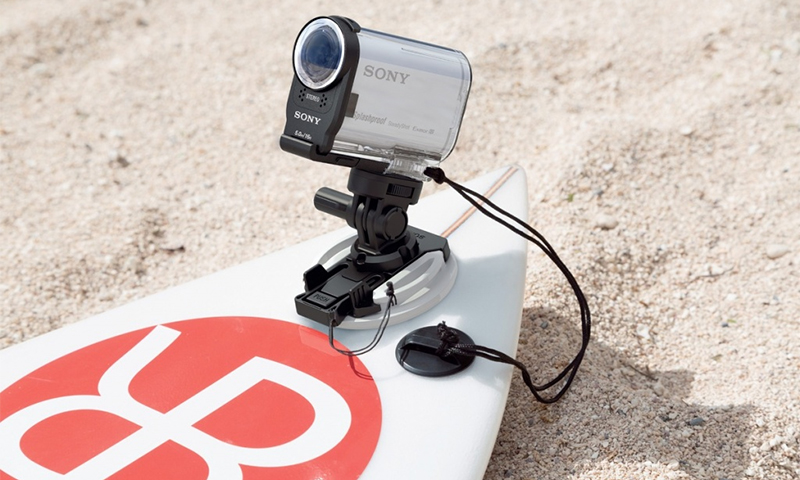In life, many moments that you want to keep in mind. However, both bad and good memories are forgotten over time and lose their urgency. Save them will help the camcorder. Many people remember the cassette devices of the late 90s - bulky and inconvenient, giving a picture of very mediocre quality. Today's digital models have seriously evolved. But because of the abundance of new features and video standards, making the right choice has become more difficult.

Content:
The best manufacturers of video cameras - which company to choose
Video cameras are a very popular and sought-after type of technology, so its range in lines from different manufacturers is growing steadily. But do not rush to buy the first available model - you may be disappointed in it after a couple of days, or even have to give it in for repair.
If you want the camcorder to be your first and only love for the coming years, do not spare money on quality devices from well-known companies:
1. Sony
2. Panasonic
3. Samsung
4. Canon
5. Jvc
The best models of these manufacturers are represented in our video camera rating. In the same place, we examined in detail their main characteristics, pros and cons.
But for the full choice of the camera of the brand name alone there is little - it is likely that the seller will simply pop you the most expensive model, the possibilities of which will be unclaimed. Therefore, let's see what your new camera should be able to do, and what functions can be safely abandoned so as not to overpay for them.
The device and the principle of the camcorder
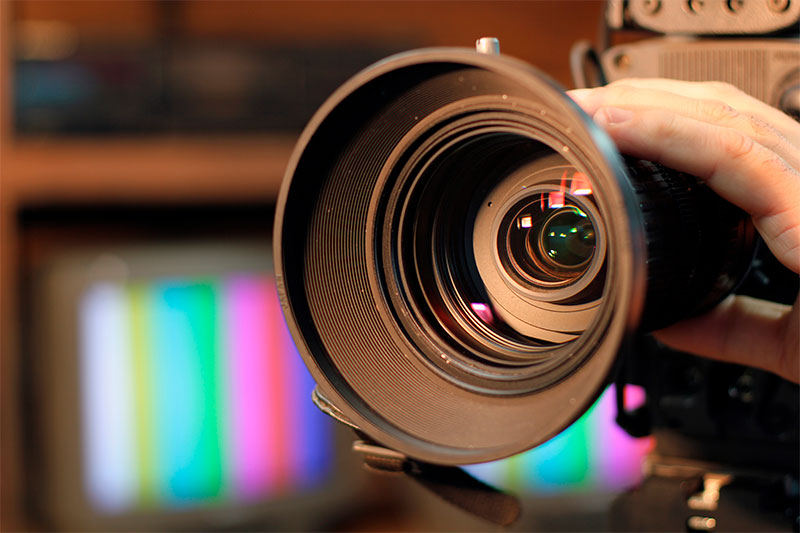
A video camera is a complex electronic device consisting of several main units:
- Lens;
- Microphone;
- Signal processing unit;
- Photosensitive matrix;
- Viewfinder and / or LCD screen, which successfully replaces it;
- Information carrier;
- Battery pack.
In powerful cameras of the middle and higher price segment, there is also an image stabilizer, which compensates for the jitter and displacement of the device when shooting. However, this is just one of the options of lenses - a kind of suspension suspension for lenses.
Briefly, the principle of the video camera is as follows: what you see on the screen or in the viewfinder is captured by the lens and projected onto an optoelectric transducer inside the device. Here the light image transmitted to the matrix is converted into an electrical signal containing information about its brightness and color component. In the processing unit, several successive processes occur, as a result of which the signal is converted and redirected to the display, and at the same time is recorded on the carrier.
Types of camcorders
Amateur
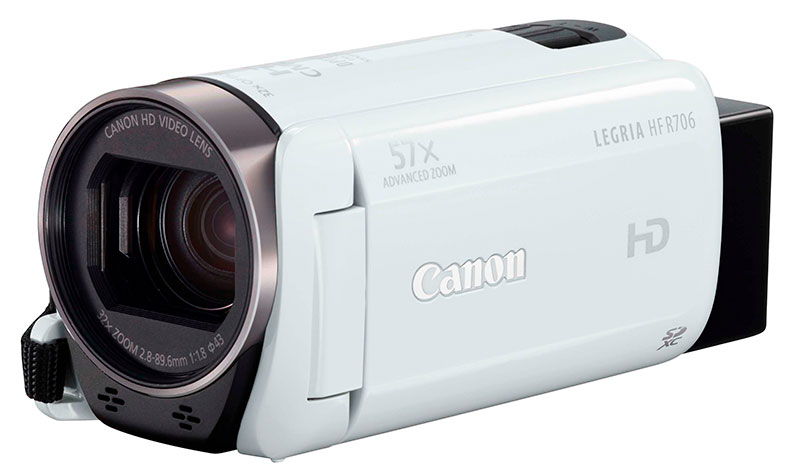
These are the simplest, cheapest and most compact camcorders of all. They do not have interchangeable optics, which degrades the quality of shooting in some conditions, and the video in such models is recorded on a regular flash card. The built-in microphone is small, often simply hidden in the case.
However, the functionality even for amateur models is quite decent and allows an inexperienced user to “play”, exposing various shooting modes. Previously, such cameras shot films only in SD format, that is, 720x576 pixels. But today you can find good models that work with HD and Full HD resolutions.
Pros:
- Acceptable image quality;
- Small weight and dimensions;
- Easy to use;
- Compatible with any computer via USB;
- Low cost.
Minuses:
- Video quality is worse than other models;
- The minimum range of the microphone - "catches" only the sounds next to the camera.
Semi-professional
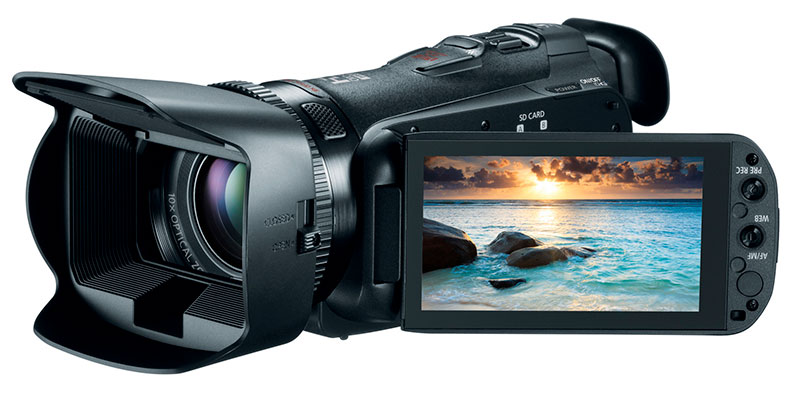
The next stage of evolution is an intermediate link between amateur and professional cameras. Such devices often have three matrices not less than 1/4 "in size, which means that the colors of the image are more reliably transmitted. Semi-professional cameras weigh from 2 to 4 kg - in one hand you can’t stand it anymore. But the record, like in amateur devices, goes to removable memory card. This technique shoots video in HD format 960x720 or HDV 1440x1080 pixels.
Pros:
- Worthy video quality;
- Average weight;
- A good microphone that can catch sounds from up to 25 m;
- Up to 4 channels of recording;
- An image stabilizer is already in use;
- A wide selection of manual settings;
- Large LCD screen.
Minuses:
- The cost is above average.
Professional
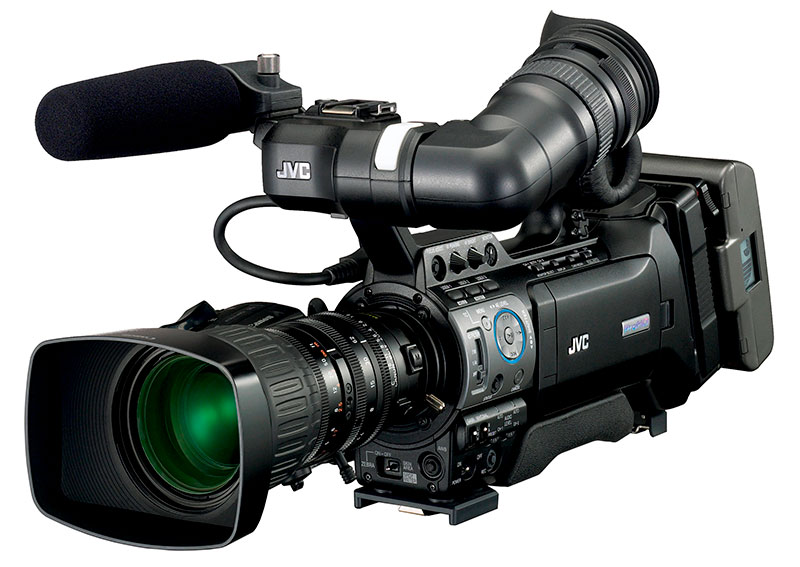
These are already serious devices intended for use in television and documentary. Such cameras weigh quite a lot (from 5 to 15 kg) - in the hands of such a “machine” you can’t especially hold it. For this there are special belts and tripods, and shooting in motion has to be carried out from the shoulder.
Professional video cameras always come with three color matrixes of at least 1/2 "in size. The optics are exceptionally replaceable. The microphone is rendered separately and is quite long (the so-called" gun "). However, there is often no LCD screen and autofocus - they are not for what.
Such serious cameras often shoot video in AVCHD format (1920x1080 pixels), but they are also able to work in 4K, HD, SD, MPEG, etc. modes.
Pros:
- Wide functionality (image stabilization, night video mode, manual focus, etc.);
- Very high picture quality;
- The microphone catches at fairly large distances - up to 50 m;
- Often there is the ability to record 5.1 surround sound;
- Compatible with other professional television equipment.
Minuses:
- Very high cost;
- Great weight.
Action cameras

These compact head cameras are necessary for athletes, extremes, and video bloggers to record their stunts or capture what is happening around. Such devices are equipped with matrices from 5 to 12 megapixels, have fairly wide viewing angles within 90-170 ° and record video to a memory card in a format not lower than Full HD with resolutions of 1280x720 or 1920x1080. The battery here is able to work up to 2.5 hours, the weight of action cameras can vary from 70 to 200 g.
Pros:
- Excellent stabilization;
- The ability to conduct accelerated shooting;
- High quality images with accurate color reproduction;
- The minimum area of "dead zones";
- Reliable fastenings for any surfaces;
- Durable and often dust-proof housing;
- Acceptable cost.
Minuses:
- The battery is quickly discharged, especially its "sits" Wi-Fi;
- Not useful in everyday life.
Camera selection options
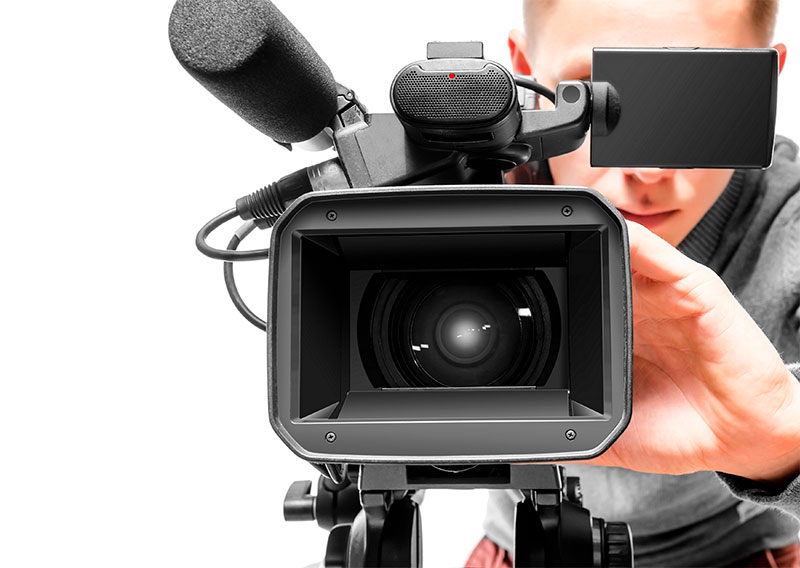
Recording standard
Here, the choice largely depends on the equipment on which you will view the footage, and what processing is required for this.
Despite the abundance of existing formats, there are only 3 generally accepted standards:
1. SD is the simplest, initial level, giving a picture with a resolution of 720x576 px. It is gradually becoming a thing of the past, although it is still used on amateur cameras. When viewed on any external monitor gives a noticeable grain.
2. HD is a good quality, but when viewed on a large screen, the image often has to be stretched, which can lead to distortion.
3. AVCHD - allows you to immediately record an image in Full HD (1920x1080) or even 4K, and if necessary, compress it to any desired resolution.
Scan Type
Another parameter affecting the recording quality and the final cost of a video camera is indicated in the label next to the resolution:
1. i - interlaced scan, often found on inexpensive devices. Here, each frame is slightly blurred, which is why a slight flickering is possible when viewing (this is especially noticeable when the movie is stopped).
2. p - progressive scan gives clear and beautiful shots, but in shooting mode it “eats” too many camera resources.
Matrices
The matrix lays out the visual image by color.This is one of the most important elements of any camera, so you need to pay special attention to its characteristics.
Matrices are of two types:
1. CMOS - have a good color transfer and a resolution of up to 1080 pixels, while they are relatively inexpensive and more economical to consume battery power.
2. CCD - most accurately convey colors at the same resolution and do not create visual noise. Installed on semi-professional and professional cameras.
The ideal quality of shooting is provided by 3CCD matrices, that is, a set of three high sensitivity filters.
The quality of the video is also affected by the size of the matrix - the wider it is, the more light it collects, making the picture brighter. This parameter is indicated as a fraction with a unit in the numerator. Accordingly, the smaller the denominator value, the larger the matrix size. Ideally, it should be at least 1/2 ", but 1/4" is allowed.
Lens
Here you should also comprehensively consider several characteristics of the optics, since the majority of budget cameras come with a built-in fixed lens.
Aperture - aperture optics. As in the matrix, it is indicated as a fraction and also determines the brightness of the image in the frame.
The viewing angle is what is popularly called “get away”. Many faced this problem: when you need to shoot a wide stage to fit it all into the frame, you have to move a few meters back. With good angles, this is no longer necessary.
However, the review also depends on the focal length of the lens f (indicated on its body as a pair of numbers through a hyphen). The farther the camera lens is from the matrix, the narrower the viewing angle will be, but objects at a distance can be viewed in more detail.
An example will help to understand the relationship of all these characteristics:
1. With a minimum value of f = 2.8 mm, the viewing angle for matrices of different sizes will be within 65-82 ° horizontally, which will allow you to shoot objects from a distance of up to 5 m.
2. At maximum f = 16 mm, the review is reduced to 17 °, but you can shoot from 40-50 m.
3. The optimal indicator is f 3.5-4 mm, at which the angle corresponds to 60 ° (this is how a person sees what is happening in front of him). In this case, the perfect detail of the picture can be obtained from a distance of 10 m.
Zoom - the ability of the lens to artificially bring objects closer by changing the focal length or using digital frame stretching. In the first case, optical zoom works, which provides an increase in the image without loss of quality of shooting. In the second, scaling gives a simple enlargement of pixels, because of which the image clarity is reduced. What should be the multiplicity of increase - you decide. But for amateur and semi-professional shooting, 15-time zoom is usually enough.
Sound
The audio quality depends on the number of audio tracks in the camcorder. The minimum number is 2, but the more recording channels, the better. Well, if the microphone is not built into the case, but brought outside and has a noise-canceling effect.
Information carrier
We are talking about the format of devices on which the camcorder can record a movie. Here the choice depends on the equipment on which you will process or watch the recording.
The current devices are able to work with two main types of media:
1. A memory card is the most convenient option, since with its compact dimensions the USB flash drive is capable of containing a sufficient amount of information. At the same time, the dimensions and weight of the camera are reduced.
2. Hard disk - like on a computer, this is the "native" and very capacious memory of the equipment itself. The main advantage of such a device is that during a long shooting (the whole day without interruptions) you can not change the media.
Additional functions
Additional features include the individual features of each camera:
- Image stabilization - effective optical, increasing the size of the lens, or electronic, compensating only a slight shake of the hands;
- Night mode;
- Photography;
- Manual focus;
- Wi-Fi and / or NFC connection, etc.
Globally, they do not affect the quality of the video, so you define the need for them yourself.
Battery
Here we need to pay attention not so much to the battery capacity or the possibility of using additional batteries, but rather to the number of resource-intensive functions of the device.
Practically everything that is in the video camera affects the battery life, starting from the presence of the screen and ending with the modes used:
1. Actually shooting - the most energy-intensive process. If you shoot a video more often than watch it, it’s necessary to specify the working time. 2-3 hours of continuous shooting is a good result for the camera.
2. File browsing is less expensive. In this mode, the camera can last several hours, so it does not need a large battery capacity.
3. Waiting time - "eats" a minimum of energy. The waiting camera can lie on for more than one day.
Display
The principle “the more the better” works here. A good diagonal, high resolution, the ability to rotate the standard screen - all this will make the camcorder more convenient to use. For high-quality pictures on the display without glare and color distortion, you should choose AMOLED or LED-options.
Which camcorder to choose

1. Those involved in professional photography need the appropriate equipment, working with the AVCHD format and recording the image on the hard disk. Matrices - only 3CCD, progressive scan, and better combined. There are no specific requirements for a standard lens, since it often goes interchangeable, although the optical image stabilization should be here anyway. Functional - the richer the better. But on the microphone should pay close attention. He must be rendered and with a good range. Ideally, if you can record sound on 5 channels, but 4 will come down.
2. If you are a “home” director or are engaged in videojournalism, take a semi-professional model with a CMOS-matrix - then the battery will last for a longer period. It is desirable that it supports Full HD format shooting, but in extreme cases, you can restrict and HD. Stabilization is obligatory, and, as in professional equipment, preference should be given to optical. It is better to take the device with a slot for a memory card and a rotary display with the maximum possible diagonal. Typically, these cameras are quite rich in functionality, so you will often need to work with the on-screen menu.
3. For entertainment and home use enough compact amateur model with one CMOS-matrix and writing to the USB flash drive. The recommended format is HD, but if the budget is limited and you are ready to put up with blurred images, you can stop at SD. Choose a wide-angle lens if you plan to take a camera with you on a trip and shoot landscapes, or a long-focus lens if you just want to capture the household.
4. For athletes and adrenaline maniacs, the only correct choice would be an action camera with helmet mounts. Here, you do not need to check any parameters, since all modern models have the necessary functions: recording in Full HD or 4K format, wide viewing angle of about 160-170 °, acceleration of shooting for slow motion, etc. The only thing is to pay attention to the resolution matrices: the optimal indicator is from 8 Mp. Everything else depends on the amount you are willing to spend: the more expensive and modern the video camera is, the higher the protection against water and dust and more shooting modes will be on it.
The cost of video cameras

1. The cost of professional models ranges from 50 thousand rubles to 4.8 million.
2. For a semi-professional model will have to pay from 5 to 200 thousand rubles.
3. Amateur cameras are sold at a price of 1500-15000 rubles.
4. Action cameras go from 1800-2000 rubles. for the simplest models with a matrix of 1-5 Mp to 40 thousand for supermodels, recording UHD 4K format and having a resolution of 8-16 Mp.
It will be interesting to friends too




